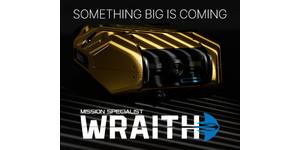Marine Technology Reporter Blogs - image: mbari
MBARI Geologists Investigate Seismic Threats

Geologists from the Monterey Bay Aquarium Research (MBARI) center used autonomous underwater vehicles (AUV) to investigate faults off the California coast in an effort ascertain any risks associated with them. For this study, the team focused on the coast of Southern California, in a region called the California Borderland. The ultra-high-resolution image of the seafloor was collected with the help of MBARI's autonomous underwater vehicles (AUVs). With the aid of these images, they measured the rate at which two crust pieces slide past each other, known as 'slip rate'. These are located within a region of the Borderland called the San Diego Trough Fault Zone that runs from the Mexican border northward toward Catalina Island.
Researchers Use Technology to Investigate Ocean Bottom

Researchers are using a bottom crawling rover to travel across the seafloor in an effort to monitor the impact of climate change in deep ocean ecosystems. Climate variation affects surface ocean processes and the production of organic carbon, which ultimately comprises the primary food supply to the deep-sea ecosystems that occupy roughly sixty percent of the Earth's surface. Warming trends in atmospheric and upper ocean temperatures, attributed to anthropogenic influence, have occurred over the past four decades. Changes in upper ocean temperature influence stratification and can affect the availability of nutrients for phytoplankton production. Global warming has been predicted to intensify stratification and reduce vertical mixing.
Using AUV Technology to Map Underwater Volcanic Activity

Scientists at Monterey Bay Research Institute have spent the last year using AUV technology to map the ocean floor. There work has taken them into a number of environments on the west coast including the northern coast of California where they have been studying three-kilometer wide scour marks on the seafloor. They have been documenting lava flow from a volcanic eruption off the coast of Oregon, and are developing new theories regarding one of the largest offshore faults in central California. The AUV has been flying 165 feet above the ocean floor using sonar to map the bathymetry, bathymetry so detailed it is programmed to chart features as small as 5 inches in height. The AUV used by MBARI, the D. Allan B.

 December 2025
December 2025



